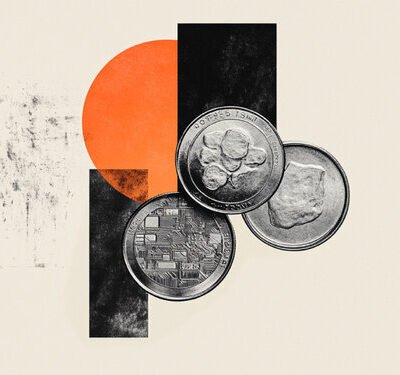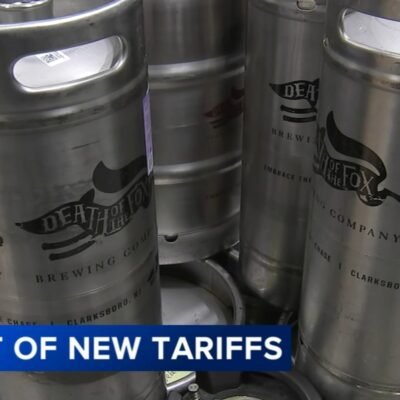Description: Stablecoins take an important place in the crypto ecosystem and perform many functions there. Especially important they are in decentralized finance. Read the post to learn more details.
The emergence of decentralized finance (DeFi) has been one of the most transformative developments in the cryptocurrency space. This permissionless and transparent financial ecosystem built on blockchain technology has unlocked new possibilities for lending, borrowing, trading, and generating yields.
At the heart of this DeFi revolution lies an oft-overlooked but crucial asset class: stablecoins. These cryptocurrencies are designed to maintain price stability, typically by being pegged to a reserve asset like the U.S. dollar. Stablecoins have become the lifeblood powering many DeFi protocols and applications, that is why many users buy USDT-TRC20 and other stablecoins. Let’s explore their vital role in the flourishing ecosystem.
Facilitating Seamless Value Transfer
One of the core advantages of stablecoins within DeFi is their ability to facilitate seamless value transfer. The inherent volatility of cryptocurrencies like Bitcoin and Ether makes them less suitable for activities that require a stable accounting framework, such as lending, borrowing, and calculating interest rates or yields.
Stable cryptos provide the necessary price stability for these financial operations, acting as a reliable medium of exchange and unit of account. The stability allows DeFi protocols to accurately calculate interest rates, collateral requirements, and payouts without concerns about fluctuating asset valuations during the transaction lifecycle.
Collateral in Lending and Borrowing
Lending and borrowing platforms form the bedrock of the DeFi ecosystem, and stablecoins play a pivotal role as collateral assets. Users can deposit stablecoins as collateral to borrow other cryptocurrencies or stablecoins themselves, enabling efficient capital deployment and utilization.
The stability of stablecoins ensures that the collateral value remains consistent, reducing the risk of liquidations due to volatile price swings. It is one more reason to use a TRX to USDT converter to get these assets. The reliability has made stablecoins a preferred choice for collateral across various DeFi lending and borrowing protocols like Compound, Aave, and others.
Liquidity Provision and Automated Market Making
Decentralized exchanges (DEXs) and automated market makers (AMMs) are critical components of the DeFi ecosystem, enabling trustless and permissionless trading of cryptocurrencies. Stable cryptos play a crucial role in providing liquidity to these platforms.
Liquidity providers can contribute stablecoin-crypto pairs to liquidity pools, earning fees from the trading activity facilitated by their capital. The stability of these assets ensures that these liquidity pools maintain a consistent asset ratio, enabling efficient and seamless token swaps for traders.
Yield Farming and Earning Opportunities
The programmable nature of DeFi protocols has given rise to various innovative yield farming opportunities, many of which involve stablecoins. Users can participate in liquidity mining programs, staking their stablecoins to earn rewards in the form of governance tokens or additional yield-bearing assets.
These coins are often used as base assets in these yield farming strategies, providing a reliable foundation for compounding returns while minimizing the risk of impermanent loss due to their price stability.
Stablecoin Adoption and Interoperability
As the DeFi ecosystem continues to grow and mature, the adoption and interoperability of stablecoins across different protocols and platforms become increasingly important. Several cryptos of this type, such as DAI, USDC, and USDT, have gained widespread acceptance and are integrated into numerous DeFi applications.
This interoperability allows for seamless capital flows and composability, where users can easily move their stable crypto holdings across various DeFi protocols to take advantage of different earning opportunities or financial services.
Challenges and Risks
While these assets play a vital role in DeFi, they are not without challenges and risks. The transparency and auditing of stablecoin reserves, particularly for centralized variants, remain a concern. Any loss of confidence in the peg or backing assets could lead to destabilizing consequences for the broader DeFi ecosystem.
Additionally, regulatory scrutiny surrounding these assets is increasing, with policymakers examining their potential systemic risks and the need for oversight to protect consumers and maintain financial stability.
Despite these challenges, the importance of these cryptos in the DeFi ecosystem cannot be overstated. They provide the necessary stability and reliability for various financial activities, enabling the growth and adoption of decentralized finance. As DeFi continues to evolve, the role of stablecoins is likely to become even more crucial, cementing their position as a foundational layer in this new financial paradigm.

If anyone reads this article found it useful, helpful? Then please subscribe www.share-talk.com or follow SHARE TALK on our Twitter page for future updates.
All information is provided on an as-is basis. Where we allow Bloggers to publish articles on our platform please note these are not our opinions or views and we have no affiliation with the companies mentioned





